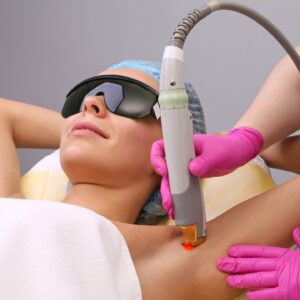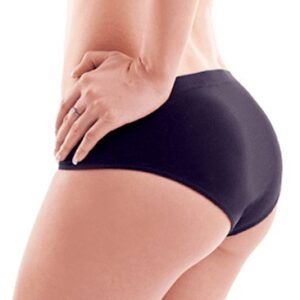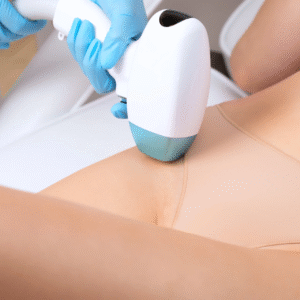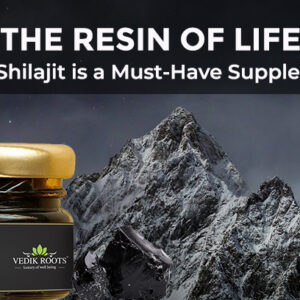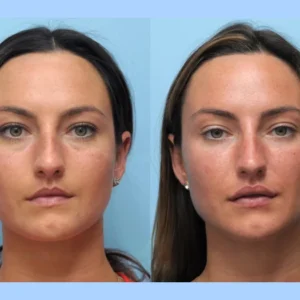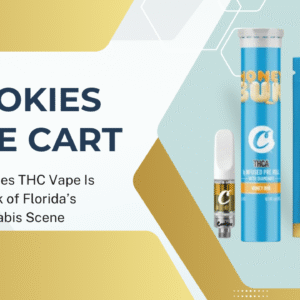Chemical peels in Dubai have become one of Dubai’s most popular skincare treatments—and for good reason. They offer a powerful way to treat acne, pigmentation, fine lines, dullness, and uneven skin texture without surgery or lasers. But how exactly do they work?
If you’re thinking about getting a chemical peel, understanding the science behind the treatment will help you make a smarter decision, manage your expectations, and ensure you’re choosing the right peel for your skin type and goals.
Let’s break it down.

What Is a Chemical Peel?
At its core, a chemical peel is a skin-resurfacing procedure that uses a chemical solution to remove the top layers of skin, stimulating regeneration and revealing smoother, healthier skin beneath.
Depending on the type and depth, chemical peels can:
-
Exfoliate dead skin cells
-
Unclog pores
-
Trigger collagen production
-
Break down pigmentation clusters
-
Stimulate the growth of new skin cells
The Skin’s Layers and How Peels Work
To understand how peels work, it’s useful to understand your skin’s structure:
-
Epidermis – The top layer. Most light peels target this layer.
-
Dermis – Below the epidermis. Medium and deep peels work here to improve wrinkles and scars.
-
Hypodermis – The deepest layer. Peels don’t reach this.
Chemical peels disrupt the outer skin layers in a controlled way. This prompts the body to start the healing process, producing new skin cells, collagen, and elastin.
Types of Peels: Classified by Depth
🟠 Light Peels (Superficial)
-
Target: Epidermis only
-
Common acids: Glycolic, lactic, mandelic, salicylic
-
Best for: Mild acne, dullness, uneven texture
-
Recovery: Little to no downtime
🟡 Medium Peels
-
Target: Epidermis + upper dermis
-
Common acids: TCA (trichloroacetic acid), Jessner’s solution
-
Best for: Pigmentation, acne scars, wrinkles
-
Recovery: 4–7 days of peeling
🔴 Deep Peels
-
Target: Deeper dermis
-
Acids: Phenol (rarely used due to intensity)
-
Best for: Severe damage or aging
-
Recovery: 7–14 days or more
In Dubai, light and medium-depth peels are most popular due to manageable downtime and climate considerations.
The Cellular Science Behind Peels
Here’s what’s happening on a microscopic level:
1. Controlled Injury
The acid causes protein denaturation in skin cells, which means it breaks down the bonds between dead cells.
2. Cellular Turnover
Your skin responds by increasing cell division, pushing newer, healthier cells to the surface faster.
3. Desquamation (Peeling)
Dead skin sheds, either as visible flaking or invisible micro-exfoliation.
4. Collagen & Elastin Synthesis
Medium and deep peels reach the dermis, triggering fibroblasts to produce new collagen fibers.
How Different Acids Target Specific Skin Issues
| Acid | Primary Function | Best For |
|---|---|---|
| Glycolic Acid | Speeds up cell turnover | Dull skin, uneven tone |
| Salicylic Acid | Penetrates oily pores | Acne, blackheads, enlarged pores |
| Lactic Acid | Gentle exfoliation + hydration | Dry or sensitive skin |
| Mandelic Acid | Anti-inflammatory, large molecule | PIH, melasma, sensitive skin |
| TCA | Medium-depth resurfacing | Acne scars, wrinkles, pigmentation |
| Jessner’s Solution | Combo peel (lactic + salicylic + resorcinol) | Texture, acne, pigmentation |
Why Dubai’s Environment Matters
Dubai’s hot climate and high UV exposure can both cause and complicate skin issues. Chemical peels must be chosen carefully to minimize risk of side effects like hyperpigmentation.
Environmental Challenges in Dubai:
-
Sun exposure: Triggers melanin, which causes dark spots post-peel if not protected.
-
Humidity + sweat: Can irritate freshly peeled skin.
-
Air conditioning: Leads to dryness and dehydration, slowing healing.
🔍 That’s why many clinics recommend peels during the cooler months or advise strict SPF and hydration post-treatment.
What Happens After the Peel: Skin Renewal Timeline
-
Day 1–2: Inflammation and activation of growth signals
-
Day 3–5: Peeling phase or flaking
-
Day 6–10: Cellular turnover completes, new skin appears
-
Week 2+: Increased collagen synthesis continues under the surface
Are Chemical Peels Safe for All Skin Tones?
Yes—but only when tailored to the individual. For darker skin tones (Fitzpatrick IV–VI), peels must be:
-
Chosen carefully to avoid triggering PIH
-
Often paired with pre-treatment lighteners (like azelaic acid)
-
Performed by experts familiar with melanin-rich skin
In Dubai, top clinics have experience with all skin tones and offer melanin-safe peels like mandelic or modified Jessner.
🧬 Risks & Side Effects: The Science of Reactions (In-Depth)
While chemical peels in Dubai are generally safe and effective when administered by qualified professionals, it’s important to understand that they involve controlled chemical injury to the skin. That injury triggers regeneration, but can also result in side effects—especially when the skin barrier is compromised or when peels are not properly tailored to the individual’s skin type and environment.
Here’s an in-depth breakdown of common and less common side effects, and the biological mechanisms behind them.
🔴 1. Post-Inflammatory Hyperpigmentation (PIH)
What it is:
PIH is the darkening of the skin after inflammation, often appearing as brown, grey, or even purple spots post-treatment.
Why it happens (science):
-
When skin is inflamed or injured (e.g., by a peel), melanocytes (pigment-producing cells) in the basal layer of the epidermis get triggered.
-
They overproduce melanin, which gets deposited unevenly in the skin.
-
This reaction is more common in Fitzpatrick skin types IV–VI, which have more reactive melanocytes.
High-risk factors:
-
Darker skin tones
-
Sun exposure post-peel
-
Overly aggressive peels
-
Inadequate pre-treatment prep (no pigment inhibitors)
Prevention/Treatment:
-
Use tyrosinase inhibitors pre- and post-peel (like azelaic acid, kojic acid, hydroquinone)
-
Strict SPF 50+ before and after treatment
-
Choose mandelic acid or lower-strength glycolic peels for melanin-rich skin
-
Avoid picking or scratching
🔵 2. Post-Inflammatory Erythema (PIE)
What it is:
Persistent red or pink discoloration post-peel, often mistaken for pigmentation but actually a vascular response.
Why it happens (science):
-
The injury causes capillary dilation and inflammation in the dermis, which takes longer to resolve, especially in sensitive skin.
-
Unlike PIH, PIE is due to blood vessels, not melanin.
High-risk groups:
-
Fair skin (Fitzpatrick types I–III)
-
People with rosacea or sensitive skin
-
Those undergoing frequent exfoliation or strong treatments
Management:
-
Use anti-inflammatory ingredients like niacinamide or green tea extract
-
Avoid further irritation (no actives or heat)
-
Topical azelaic acid and laser therapy may be used for persistent cases
⚠️ 3. Infection
What it is:
Bacterial, fungal, or viral infection occurring when the skin barrier is compromised, especially after medium to deep peels.
Why it happens (science):
-
Peels temporarily thin the stratum corneum, reducing its ability to protect against pathogens.
-
Staphylococcus aureus (bacteria), candida (fungus), or even herpes simplex virus can invade damaged tissue.
Common symptoms:
-
Yellow crusting
-
Pus-filled lesions
-
Burning or unexpected pain
-
Sudden spreading redness
Prevention:
-
Avoid touching your face post-peel
-
Use antiseptic cleansers if prescribed
-
Antiviral medication may be given preventatively for those with a history of cold sores (especially with deep peels)
⚪ 4. Hypopigmentation
What it is:
Loss of skin pigment or white patches after deep peels, usually permanent.
Why it happens (science):
-
When a peel penetrates too deeply, it can damage or destroy melanocytes, which are responsible for melanin production.
-
This results in reduced pigment synthesis in affected areas.
More likely with:
-
Phenol peels or high-concentration TCA
-
Individuals with darker skin undergoing strong peels
-
Overlapping peels or over-treatment of the same area
Prevention:
-
Avoid deep peels unless absolutely necessary
-
Always tailor peel strength to skin tone
-
Consider combination therapies (like microneedling + light peel) for safer resurfacing
🔺 5. Scarring
What it is:
Permanent damage to skin structure, including hypertrophic or atrophic scars, though extremely rare with superficial peels.
Why it happens (science):
-
Deep dermal injury may disrupt fibroblast function, leading to excessive collagen deposition (raised scars) or collagen loss (pitted scars).
-
Picking at skin or using irritants during healing can worsen this.
Risk factors:
-
History of keloids or scarring
-
Improper peel strength
-
Use of aggressive products during recovery
-
Infection or skin trauma
How to avoid:
-
Disclose any scarring history
-
Follow all aftercare instructions strictly
-
Avoid mechanical exfoliation or active skincare for 7–10 days post-peel
🧯 6. Prolonged Peeling or Delayed Healing
What it is:
Peeling that lasts longer than 7–10 days, or skin that stays red and inflamed beyond the normal recovery period.
Biological cause:
-
Impaired skin barrier function
-
Dehydration from the environment or overuse of actives
-
Excessive inflammation due to product reaction or allergies
Common in:
-
People using retinoids, acids, or scrubs too soon post-peel
-
Those with pre-existing dermatitis or eczema
-
Those exposed to harsh Dubai conditions too quickly after treatment
Fix it with:
-
Occlusive moisturizers (like petrolatum or ceramide creams)
-
Barrier-repair skincare (niacinamide, squalane, panthenol)
-
A temporary stop to all actives, including vitamin C and exfoliants
🔬 Final Thoughts: Risk Is Real, But Preventable with Science
Chemical peels are scientifically proven to work—but their power requires precision. Understanding the biological mechanisms behind potential side effects helps you:
-
Ask better questions
-
Choose a provider that understands skin biology
-
Follow aftercare with purpose, not just habit
In Dubai, where environmental factors increase the risk of skin reactions, knowing the science isn’t just interesting—it’s essential for safety and success.
Final Thoughts: Science Makes the Peel Safe and Effective
There’s a reason chemical peels have stood the test of time—they’re backed by solid science and deliver visible results when done right.
If you’re in Dubai and considering a peel, make sure to:
-
Understand what’s happening beneath the surface
-
Choose the right peel based on your skin and goals
-
Follow the science—and your provider’s advice—for optimal healing
With the right guidance, chemical peels can transform your skin safely, efficiently, and scientifically.
